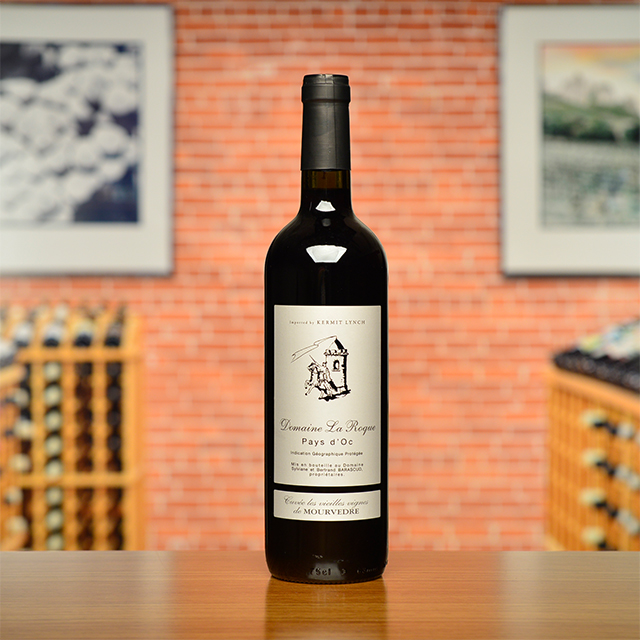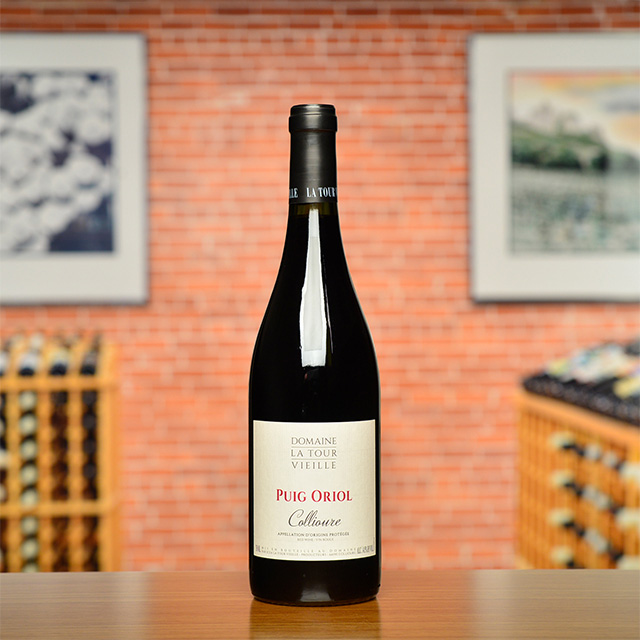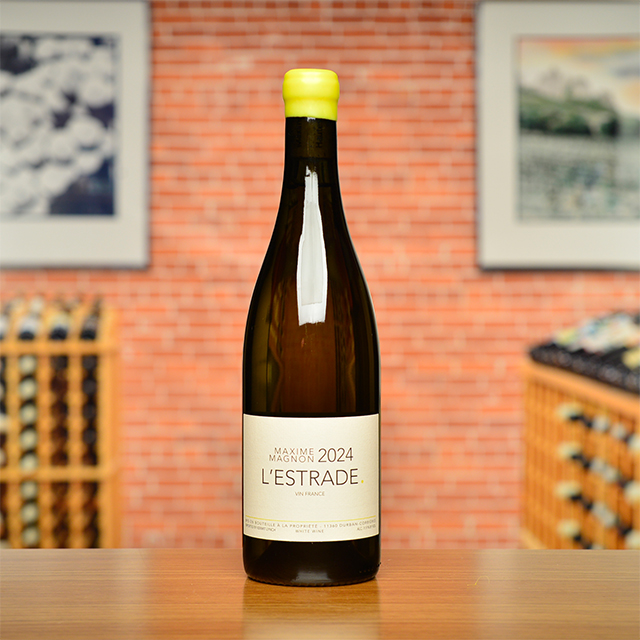Notify me
2018 Faugères
Domaine Leon Barral
The first time I tasted Domaine Leon Barral’s Faugères—before I knew much about Didier Barral, who named the domaine for his grandfather—I experienced a coup de foudre. It wasn’t really because of the wine’s succulent notes of mixed red and black fruit, spices, and leather. It wasn’t even that it was somehow simultaneously rustic and graceful, dark and light on its feet. Instead, I fell in love with Barral’s Faugères because of the raw, primal feeling the wine gave me: specifically, the desire to go hunting with my uncle in the backwoods of Maine and sip this soulful red by a campfire, far away from city lights and social media.
Some time after, I discovered that Didier is our last producer to work off the grid, with no cell phone, no email, and no computer. He gardens and raises cows and pigs on his property an hour west of Montpellier. The animals fertilize the soils, trim competing vegetation, and eventually feed Didier and his family. Most importantly, he farms biodynamically, with a zealous devotion to biodiversity, creating an ideal habitat for his vines and all the life around them.
Incredibly, the wine had communicated a love of nature on its own, before I knew any of this. I therefore recommend that you open a bottle of the Faugères in the outdoors. Take it on your next camping trip or fishing excursion, or at the very least, open it in your backyard and leave your phone inside.
—Tom Wolf
| Wine Type: | red |
| Vintage: | 2018 |
| Bottle Size: | 750mL |
| Blend: | 50% Carignan, 30% Grenache, 20% Cinsault |
| Appellation: | Faugères |
| Country: | France |
| Region: | Languedoc-Roussillon |
| Producer: | Domaine Leon Barral |
| Winemaker: | Didier Barral |
| Vineyard: | 40 to 70 years, 14 ha |
| Soil: | Schist |
| Aging: | Aged for 2 years in cement and stainless steel cuves |
| Farming: | Biodynamic (practicing) |
| Alcohol: | 14% |
More from this Producer or Region

2021 Pays d’Oc Rouge “Les Vieilles Vignes de Mourvèdre”
France | Languedoc-Roussillon
** New Wine Added ** One of the greatest values we import from any region.

2022 Corbières Rouge “Réserve La Demoiselle”
France | Languedoc-Roussillon
Hailing from the rugged and windswept hills of Corbières, which teem with garrigue and olive groves, La Demoiselle delivers a glorious taste of the South.

2019 Faugères “Valinière”
France | Languedoc-Roussillon
Valinière is a monumental demonstration of what happens when respectfully working the earth is not just a job, but one’s whole life.

2022 Vin de France Blanc
France | Languedoc-Roussillon
Searching for something a bit funky to enliven your jaded palate? Look no further and prepare for an experience like none other.

2023 Pays d’Oc Cabernet Sauvignon “Les Traverses”
France | Languedoc-Roussillon
Genuinely reflecting the down-home, country soulfulness we love about the Languedoc.

2020 Faugères “Jadis”
France | Languedoc-Roussillon
Earthy, meaty, savory, juicy, and powerful, it is a glassful of joyful, soulful goodness.

2021 Pays d’Hérault Rouge
Domaine de la Grange des Pères
France | Languedoc-Roussillon
Grange des Pères defies categorization and redefines greatness.

2022 Collioure Rouge “Puig Oriol”
France | Languedoc-Roussillon
A brooding, wild beast with hints of black fruit and Mediterranean herbs, this is a portal to Catalonia’s stunning seaside vineyards.

2024 Vin de France Blanc “L’Estrade”
France | Languedoc-Roussillon
The imprint of the sun-kissed landscape of the Languedoc is clear, with aromas of honeysuckle and lime zest.

2022 Vin de France Blanc “Malvoise”
France | Languedoc-Roussillon
Tasting the bottle, one quickly sees winemaker Cyriaque Rozier’s statement that Malvasia has “acclimated perfectly to the land of La Roque” is not an overstatement.
About The Producer
Domaine Leon Barral
Didier Barral represents the 13th generation to grow grapes in the tiny hamlet of Lenthéric, deep in the heart of the Languedoc. Domaine Léon Barral is a beacon of revolutionary winegrowing: shortly after founding the domaine, Didier decided that biodynamic practices were best for his 30 hectares of vineyards. His vines are very old—some up to 90 years of age—keeping yields naturally low. Once in the cellar, Didier’s harvest is cared for with the same zeal, though he would consider the wine all but finished once it leaves the vineyard. This level of artisanship was once nearly extinct, had it not been for Didier and the profound influence he has over viticulteurs who now see how his work ethic and ideology translates to results.
About The Region
Languedoc-Roussillon

Ask wine drinkers around the world, and the word “Languedoc” is sure to elicit mixed reactions. On the one hand, the region is still strongly tied to its past as a producer of cheap, insipid bulk wine in the eyes of many consumers. On the other hand, it is the source of countless great values providing affordable everyday pleasure, with an increasing number of higher-end wines capable of rivaling the best from other parts of France.
While there’s no denying the Languedoc’s checkered history, the last two decades have seen a noticeable shift to fine wine, with an emphasis on terroir. Ambitious growers have sought out vineyard sites with poor, well draining soils in hilly zones, curbed back on irrigation and the use of synthetic fertilizers and pesticides, and looked to balance traditional production methods with technological advancements to craft wines with elegance, balance, and a clear sense of place. Today, the overall quality and variety of wines being made in the Languedoc is as high as ever.
Shaped like a crescent hugging the Mediterranean coast, the region boasts an enormous variety of soil types and microclimates depending on elevation, exposition, and relative distance from the coastline and the cooler foothills farther inland. While the warm Mediterranean climate is conducive to the production of reds, there are world-class whites and rosés to be found as well, along with stunning dessert wines revered by connoisseurs for centuries.
More from Languedoc-Roussillon or France
2024 Collioure Blanc “Les Canadells”
Domaine La Tour Vieille France | Languedoc-Roussillon
Banyuls Vinegar
Domaine La Tour Vieille France | Languedoc-Roussillon
2024 Corbières Rouge “La Démarrante”
Maxime Magnon France | Languedoc-Roussillon
2021 Languedoc Montpeyroux Rouge “Les Cocalières”
Domaine d’Aupilhac France | Languedoc-Roussillon
2022 Languedoc Montpeyroux Rouge
Domaine d’Aupilhac France | Languedoc-Roussillon
2022 Vin de France Blanc “Malvoise”
Château La Roque France | Languedoc-Roussillon
2022 Saint-Chinian Rouge “Sortilège”
Les Eminades France | Languedoc-Roussillon
2022 Vin de France Blanc de Voile
Ludovic Engelvin France | Languedoc-Roussillon
2024 Vin de France Rouge “Saint Jacques”
Maxime Magnon France | Languedoc-Roussillon
2022 Vin de France Blanc
Domaine Leon Barral France | Languedoc-Roussillon
2016 Saint-Chinian Rouge “Causse du Bousquet”
Mas Champart France | Languedoc-Roussillon
2021 Pays d’Oc Rouge “Les Vieilles Vignes de Mourvèdre”
Château La Roque France | Languedoc-Roussillon
2024 Collioure Blanc “Les Canadells”
Domaine La Tour Vieille France | Languedoc-Roussillon
Banyuls Vinegar
Domaine La Tour Vieille France | Languedoc-Roussillon
2024 Corbières Rouge “La Démarrante”
Maxime Magnon France | Languedoc-Roussillon
2021 Languedoc Montpeyroux Rouge “Les Cocalières”
Domaine d’Aupilhac France | Languedoc-Roussillon
2022 Languedoc Montpeyroux Rouge
Domaine d’Aupilhac France | Languedoc-Roussillon
2022 Vin de France Blanc “Malvoise”
Château La Roque France | Languedoc-Roussillon
2022 Saint-Chinian Rouge “Sortilège”
Les Eminades France | Languedoc-Roussillon
2022 Vin de France Blanc de Voile
Ludovic Engelvin France | Languedoc-Roussillon
2024 Vin de France Rouge “Saint Jacques”
Maxime Magnon France | Languedoc-Roussillon
2022 Vin de France Blanc
Domaine Leon Barral France | Languedoc-Roussillon
2016 Saint-Chinian Rouge “Causse du Bousquet”
Mas Champart France | Languedoc-Roussillon
2021 Pays d’Oc Rouge “Les Vieilles Vignes de Mourvèdre”
Château La Roque France | Languedoc-Roussillon
Kermit once said...

Kermit once said...
A good doctor prescribed the wine of Nuits-Saint-Georges to the Sun King, Louis XIV, when he suffered an unknown maladie. When the king’s health was restored the tasty remedy enjoyed a vogue at court. Lord, send me a doctor like that!
Inspiring Thirst, page 117

















